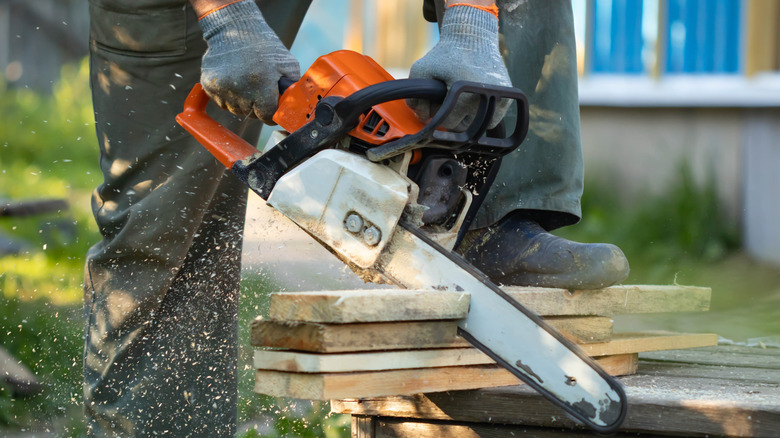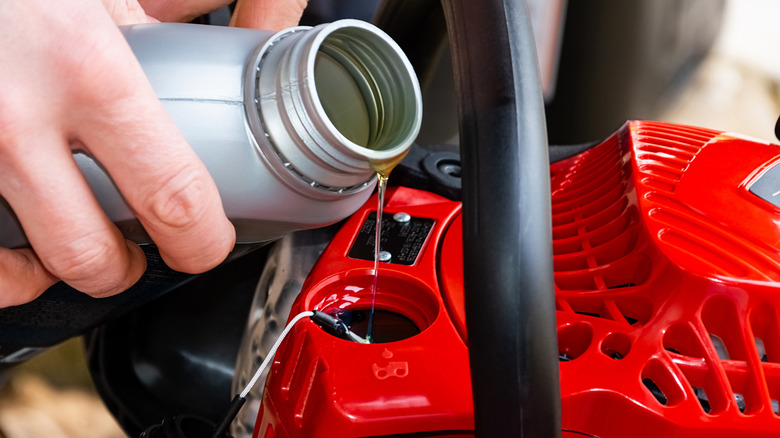Why Do Chainsaws Leak Bar Oil?
Bar oil is vital for your chainsaw as it reduces wear and tear while ensuring a smooth operation. But if you've found your securely stored chainsaw sitting on top of a sticky puddle, you know how frustrating it is. Whether it happened in your garage or in the back of your truck, that slow leak can not only make a mess, it can also make you think something's wrong. But it's actually a common issue and there is a simple reason behind it.
Bar oil, also known as bar and chain oil, can spread around the guide bar and chain during the times when the saw is running but not cutting. After you turn off and store the chainsaw, that excess oil can run off underneath, making it appear as though the tool is leaking. Chainsaws that have been overfilled with oil can also contribute to the problem, depending on the brand and the tech that's built into the tank itself.
Stihl chainsaws like the MS 170, for example, feature an oil tank with a one-way valve. This breathing system lets air into the tank when you're operating the saw, thus preventing any oil from getting on you. But if the stored chainsaw is subjected to big temperature changes from one day to the next, oil can actually be forced out of the tank in small amounts. While it's not a major cause for concern, the problem can get worse and could result in all of the oil eventually draining out.
Large oil leaks could signal a serious problem with your chainsaw
While it's common for chainsaws to leak oil, big leaks may indicate that you have a more serious issue, like a clogged oil line or possibly even a bad oil pump. You might have another problem, like worn-out seals and gaskets, which can affect powerful gasoline-powered chainsaws, corded, and cordless chainsaws as well.
Some key warning signs include constantly having to refill the oil, heavy smoke from the chain during use, and a dry bar. Your chainsaw should operate smoothly on a tank of oil a day; anything less means something else is going on.
When trying to figure out the problem, it's best to start with the owner's manual, which should inform you on how to ensure the chainsaw's oil system is working. Once that's confirmed, you can remove the bar and chain, then wipe any oil from the saw, including underneath. Then place the saw on top of some cardboard and wait. If there's a lot of oil under the saw after an hour, do the test again. If the problem persists and you're comfortable doing the work, you can continue with maintenance yourself or take the chainsaw in for service.

